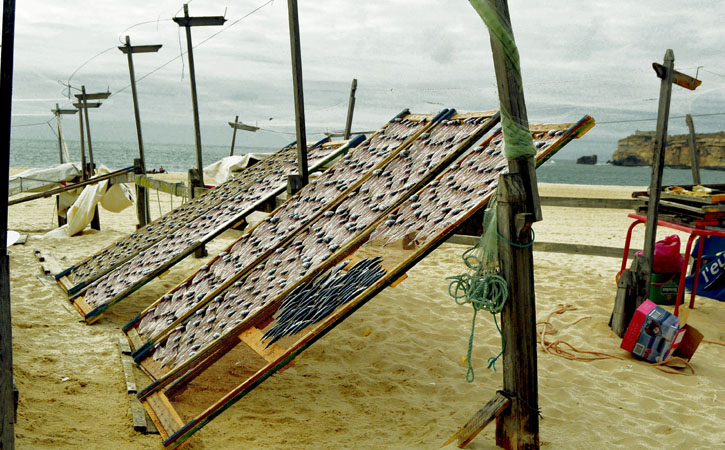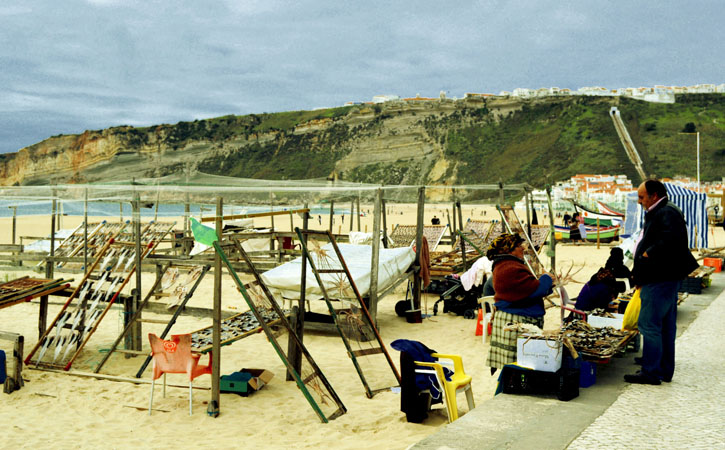Nazare Dried Fish Tradition
The Nazare Dried Fish Tradition is of little known origin, but this is one of the postcards that the village presents to those who visit it.
The salespeople exposed online, on the beach, show whoever passes on the importance of an art that time preserves.
What would be a way to conserve fish, so that in the days when fishing did not translate into luck for the family, there would be food or something to sell in the markets, reached today as a tradition.
From sustenance to a tourist landmark, time, this actor who does not leave the stage, shows the difficulties of a people who lived from fishing and from what the sea gave.
Just as it is usual to hear the local buzzwords of “Zimmers, Rooms, Chambres”, as soon as we step off the bus, the tradition of dried fish continues there.
In Nazare the species most used for drying are horse mackerel, sardines and octopus, due to their abundance.
Extended on the banner, a kind of net, facing south where the fish is placed to dry, the locals use two techniques to do this (dried fish): dried and nauseated fish, with different preparation and consumption characteristics.
First it is “dawn”, where the guts are removed from the fish, then it is washed and passed through a brine made with water and coarse salt.
After this process is over, the fish is opened or scaled, spread on the paneiros and placed in the sun.
Drying can take between 2 to 3 days, depending (as experts say) on atmospheric conditions.
This tradition with many locals admirers, is not a usual practice in other regions, which makes it very difficult to sell it to tourists, who very timidly take a bag there by hand to later taste the delicacy.
According to the technique used to dry the fish, the way of eating also varies.
Dried fish can be eaten raw and shredded, or cooked and drizzled with olive oil, vinegar or lemon juice and chopped garlic. While “nauseated” is usually grilled.
In order to maintain, share and “cultivate” the tradition of drying fish, the Municipality of Nazaré will launch the Museu do Peixe Seco da Nazaré in 2017.
Another project that will be developed will be product certification.
Where can they find the “banners”? It is south of the beach, next to the Nazaré Cultural Center.


